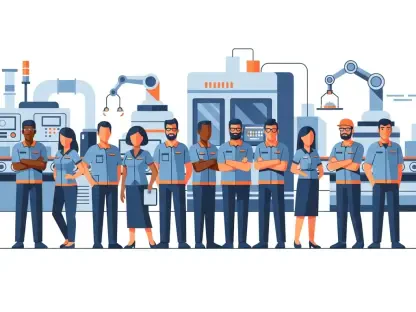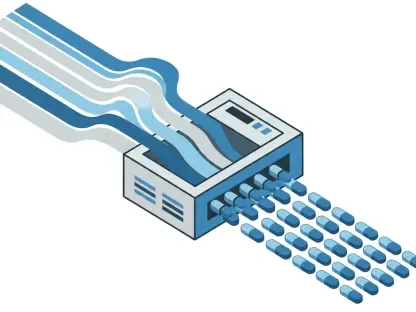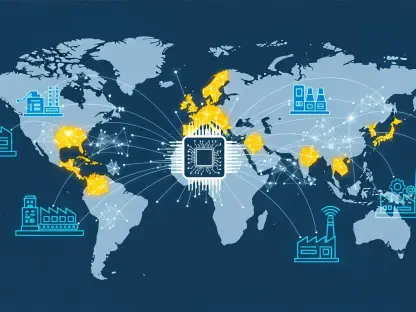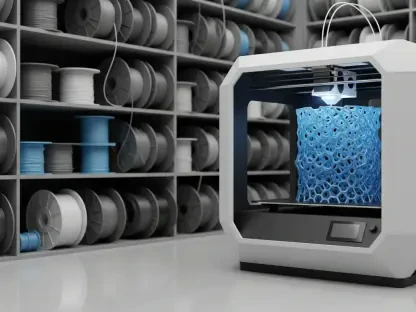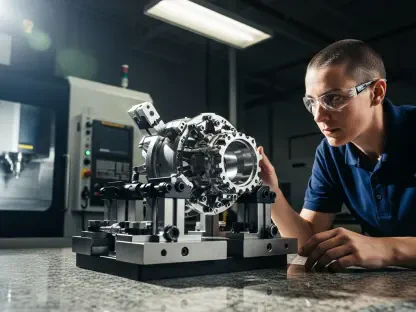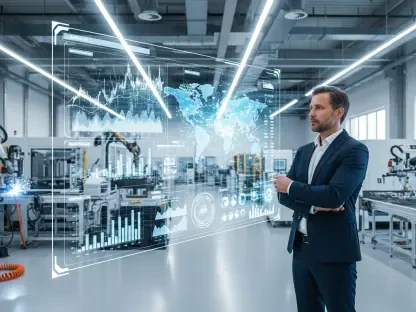Imagine an India where every vehicle on the road is built with homegrown innovation, powered by sustainable fuels, and designed to meet global standards of safety and efficiency, a vision that took center stage at the 65th Annual Convention of the Society of Indian Automobile Manufacturers (SIAM). This landmark event brought together policymakers, industry veterans, and emerging innovators to discuss self-reliance in the automotive sector. With the industry contributing significantly to national GDP and employment, the urgency to reduce import dependency and embrace clean mobility has never been clearer. This roundup gathers diverse opinions, strategies, and perspectives from multiple stakeholders to highlight how collaboration, technology, and policy are shaping the future of India’s automobile landscape. The purpose is to distill key insights and present a balanced view of the challenges and opportunities driving this transformative journey.
Unveiling Perspectives on India’s Automotive Self-Reliance
Government Vision Meets Industry Action
A prominent theme at the convention was the alignment between governmental goals and industry efforts to foster self-reliance. High-ranking officials emphasized the role of initiatives like “Make in India” in positioning the country as a global manufacturing hub. The focus was on reducing reliance on foreign components by incentivizing local production through targeted policies and infrastructure support. Many in attendance noted that such measures have already boosted confidence among international investors, creating a ripple effect on domestic capabilities.
Industry representatives echoed this sentiment, pointing out that collaboration with the government has been instrumental in streamlining supply chains. However, some expressed concerns about the pace of policy implementation, arguing that bureaucratic delays could hinder progress. Despite these reservations, there was a consensus that sustained dialogue between the two sides is essential to address gaps and build a robust manufacturing ecosystem.
A differing viewpoint came from smaller players who highlighted the need for tailored support, such as subsidies or tax breaks, to compete with larger corporations. This diversity of opinion underscores the complexity of achieving self-reliance, where one-size-fits-all solutions may not suffice. Balancing the needs of varied stakeholders remains a critical challenge for policymakers.
Industry Leaders on Innovation and Local Production
On the innovation front, seasoned industry leaders stressed the importance of investing in research and development to create cutting-edge automotive solutions domestically. Many pointed to the success of programs aimed at strengthening local production, noting that reducing import dependency not only saves costs but also enhances national security in supply chains. There was widespread agreement that building a self-sufficient ecosystem requires long-term commitment to skill development and technological advancement.
However, opinions diverged on the readiness of the sector to handle rapid shifts in production models. Some leaders cautioned that an overemphasis on speed could compromise quality, advocating for a phased approach to scaling up domestic manufacturing. They suggested prioritizing key components where India can gain a competitive edge before tackling more complex assemblies.
A contrasting perspective emerged from mid-tier manufacturers who argued for immediate, aggressive localization to capitalize on current market demands. They believe that delays in adopting self-reliant practices risk losing ground to global competitors. This debate reveals the tension between caution and urgency, a dynamic that continues to shape strategic planning in the sector.
Sustainability and Clean Mobility: A Shared Goal with Varied Approaches
Electric Vehicles and Alternative Fuels in Focus
The surge in electric vehicle (EV) adoption, with nearly 2 million registrations in the current fiscal year, was a hot topic among attendees. Many industry voices celebrated this growth as a clear indicator of consumer readiness for sustainable options, attributing success to government incentives and expanding charging networks. The push for alternative fuels like biofuels, compressed natural gas (CNG), and liquefied natural gas (LNG) was also hailed as a step toward cutting oil imports.
Yet, not all perspectives were uniformly optimistic. Some stakeholders raised concerns about consumer hesitancy due to high upfront costs of EVs and limited infrastructure in rural areas. They urged more aggressive public awareness campaigns to bridge the knowledge gap and drive wider acceptance of green technologies.
A third viewpoint focused on the economic benefits of sustainability, with several participants noting that programs like the adoption of E20-compatible vehicles support rural economies by promoting ethanol production. This angle highlighted how environmental goals can align with social and economic priorities, though the scalability of such initiatives remains under scrutiny.
Green Hydrogen and Emerging Technologies
Emerging technologies, particularly green hydrogen for buses and trucks, garnered significant attention as a future-focused solution. Innovators and startup founders at the convention were vocal about the potential of pilot projects to transform urban mobility, emphasizing that hydrogen could address long-standing issues of pollution in densely populated areas. Their enthusiasm was backed by data showing promising early results in regional trials.
Established industry players, while supportive, offered a more measured take, pointing out the high costs and technical challenges of scaling hydrogen solutions. They advocated for a hybrid approach, combining current EV advancements with gradual integration of newer fuels to mitigate risks. This cautious optimism reflects a pragmatic stance on balancing innovation with feasibility.
A smaller but vocal group of tech advocates argued that waiting for perfect conditions could stall progress, pushing for bolder investments in energy storage and hydrogen infrastructure. This clash of timelines and priorities illustrates the broader struggle to align visionary ideas with practical execution in the pursuit of clean mobility.
Safety and Circular Economy: Broader Responsibilities
Road Safety as a Collective Priority
Road safety emerged as a critical area of focus, with many attendees commending ongoing campaigns to enhance public awareness and improve vehicle standards. Industry insiders highlighted the importance of integrating advanced safety features into domestically manufactured vehicles, viewing this as a way to build trust in Indian brands on a global stage. The shared commitment to safer roads was evident across discussions.
However, opinions varied on the best methods to achieve these goals. Some emphasized stricter regulations and enforcement, arguing that voluntary compliance often falls short. They pointed to international benchmarks where mandatory safety protocols have yielded measurable reductions in accidents, suggesting a similar model for India.
Others favored a more collaborative approach, stressing partnerships with educational institutions and community organizations to foster a culture of safety. This perspective prioritizes long-term behavioral change over immediate regulatory fixes, revealing a nuanced debate on how to tackle an issue that affects millions of lives annually.
Recycling and Resource Efficiency Strategies
The concept of a circular economy, particularly through vehicle scrappage policies, was another point of convergence. Many stakeholders praised efforts to promote recycling as a means to reduce waste and conserve resources, aligning with self-reliance by reusing materials locally. The environmental benefits of such practices were widely acknowledged as a complement to sustainability goals.
Differing views surfaced on the pace and scope of implementation. Larger corporations often supported a gradual rollout of scrappage programs to avoid disrupting market dynamics, citing the need for adequate recycling facilities before full adoption. Their stance prioritizes infrastructure readiness as a prerequisite for success.
Smaller entities and environmental advocates, on the other hand, called for accelerated timelines, arguing that delays in embracing circular practices undermine broader decarbonization targets. This divergence highlights the challenge of aligning economic realities with ecological imperatives, a tension that will likely persist in policy discussions.
Key Takeaways from Diverse Voices
Reflecting on the myriad insights shared at the SIAM Annual Convention, it became evident that self-reliance in India’s auto industry hinges on multifaceted collaboration. The event showcased a strong alignment between government policies and industry ambitions, particularly in promoting local manufacturing and EV adoption. Discussions on sustainability revealed both optimism and caution, with electric vehicles and alternative fuels marking significant progress, while green hydrogen hinted at future potential. Safety and circular economy practices rounded out the dialogue, underscoring the sector’s broader societal responsibilities.
Beyond the consensus, the diversity of opinions offered valuable lessons. Debates on the speed of localization, the scalability of new technologies, and the approach to safety regulations illuminated the complexities of transforming a vital industry. These varied perspectives served as a reminder that progress requires balancing innovation with pragmatism, urgency with caution.
Looking ahead, stakeholders were encouraged to dive deeper into specific areas like investing in local research, expanding EV infrastructure, and advocating for robust safety standards. Exploring further resources on government-industry partnerships and emerging tech trends was recommended to stay informed. The convention left a lasting impact by fostering a dialogue that bridged immediate challenges with long-term visions, paving the way for actionable strategies to strengthen India’s position in the global automotive arena.


